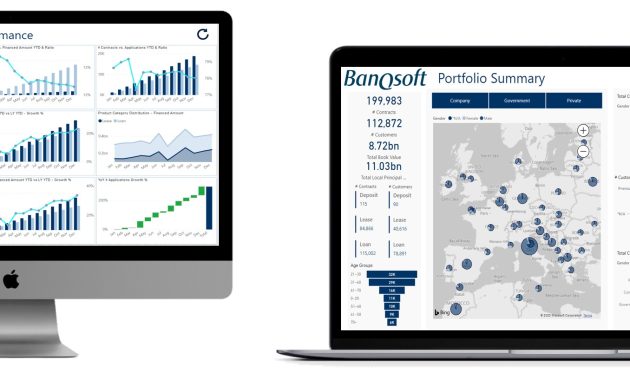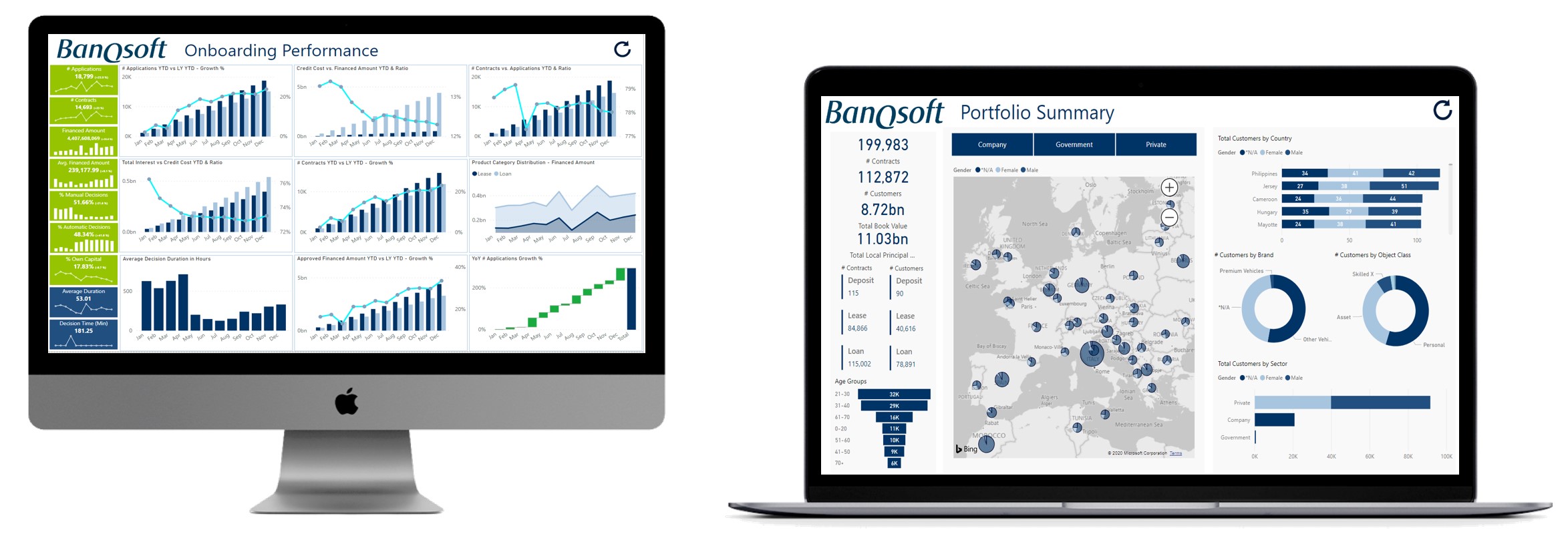
Smart Shifts: Navigating Business Transformation with Self-Service Business Intelligence Software
In the ever-evolving landscape of modern business, agility and data-driven decision-making are no longer luxuries; they are necessities. Companies are constantly seeking ways to adapt quickly to market changes, understand customer behavior, and optimize operations. This is where the power of self-service business intelligence (BI) software comes into play, enabling smart shifts across organizations. This technology empowers users to analyze data, generate insights, and make informed decisions without relying solely on IT or data science experts.
The adoption of self-service BI software represents a paradigm shift. It moves the power of data analysis from a centralized, specialized department to the hands of business users across all departments. This democratization of data offers numerous benefits, including increased efficiency, improved decision-making, and enhanced collaboration. The ability to quickly access, analyze, and visualize data allows businesses to respond to market trends and customer needs in real-time, driving competitive advantage. This article delves into the core aspects of smart shifts achieved through self-service BI software.
The Rise of Self-Service Business Intelligence
The traditional approach to business intelligence involved a complex, time-consuming process. Data was often siloed, requiring IT departments or specialized analysts to extract, transform, and load (ETL) data. This process could take weeks or even months, by which time the insights gained might be outdated. Self-service BI software eliminates these bottlenecks.
With self-service BI software, users can connect to various data sources, create their own dashboards and reports, and gain insights quickly. This shift has been fueled by several factors:
- Increased Data Volume: The exponential growth of data from various sources has made traditional BI methods inefficient.
- Demand for Speed: Businesses need insights faster than ever to stay competitive.
- Ease of Use: User-friendly interfaces and drag-and-drop functionality make data analysis accessible to non-technical users.
- Cost Efficiency: Self-service BI software can reduce reliance on expensive data analysts and IT resources.
The transition to self-service BI software is not merely a technological upgrade; it’s a cultural one. It requires businesses to foster a data-driven culture where data literacy is encouraged and employees are empowered to make data-informed decisions. This is a fundamental aspect of achieving smart shifts.
Key Features and Benefits of Self-Service BI Software
Self-service BI software offers a wide range of features and benefits that contribute to smart shifts within an organization. Some of the core functionalities include:
- Data Integration: The ability to connect to various data sources, including databases, cloud services, and spreadsheets.
- Data Visualization: Interactive dashboards, charts, and graphs to present data in an easy-to-understand format.
- Data Analysis: Tools for data exploration, filtering, and advanced analysis, such as statistical modeling and predictive analytics.
- Report Generation: Automated reporting capabilities to track key performance indicators (KPIs) and share insights.
- Collaboration: Features that allow users to share dashboards, reports, and insights with colleagues.
The benefits of using self-service BI software are numerous and can significantly impact business performance:
- Improved Decision-Making: Faster access to insights leads to more informed decisions.
- Increased Efficiency: Automation and self-service capabilities reduce the burden on IT and data analysts.
- Enhanced Collaboration: Shared dashboards and reports promote teamwork and knowledge sharing.
- Cost Reduction: Reduced reliance on external consultants and specialized resources.
- Competitive Advantage: The ability to respond quickly to market changes and customer needs.
Driving Smart Shifts Across Business Functions
Self-service BI software is not limited to a single department or function. Its versatility allows it to drive smart shifts across various areas of a business:
Sales and Marketing
Sales and marketing teams can use self-service BI software to analyze sales performance, track marketing campaign effectiveness, and identify customer segments. This data-driven approach enables them to optimize their strategies and improve ROI. For example, they can track conversion rates, identify top-performing products, and understand customer churn.
Finance and Accounting
Finance departments can use self-service BI software to monitor financial performance, track expenses, and identify areas for cost savings. They can create dashboards to visualize key financial metrics, such as revenue, profit margins, and cash flow. This enables them to make informed financial decisions and improve efficiency.
Operations and Supply Chain
Operations teams can use self-service BI software to optimize processes, track inventory levels, and improve supply chain efficiency. They can monitor production output, identify bottlenecks, and track delivery times. This data-driven approach helps them improve operational efficiency and reduce costs.
Human Resources
HR departments can use self-service BI software to analyze employee data, track performance metrics, and identify areas for improvement in employee engagement and retention. They can create dashboards to track employee turnover, salary expenses, and training effectiveness. This enables them to make data-driven decisions about workforce management.
Implementation Best Practices for Self-Service BI Software
Implementing self-service BI software successfully requires careful planning and execution. Here are some best practices to follow:
- Define Business Goals: Clearly define the business objectives and KPIs that the self-service BI software will help achieve.
- Choose the Right Software: Select a self-service BI software solution that meets the specific needs of the organization. Consider factors such as ease of use, data integration capabilities, and scalability.
- Provide Training and Support: Offer comprehensive training and ongoing support to users to ensure they can effectively use the software.
- Establish Data Governance: Implement data governance policies to ensure data quality, security, and compliance.
- Foster a Data-Driven Culture: Encourage data literacy and create a culture where data-informed decisions are valued.
- Start Small and Iterate: Begin with a pilot project to test the software and then expand its use gradually.
Following these best practices will increase the likelihood of achieving successful smart shifts.
The Future of Self-Service Business Intelligence
The future of self-service BI software is bright. As technology continues to evolve, we can expect to see even more advanced features and capabilities. Key trends include:
- Artificial Intelligence (AI) and Machine Learning (ML): AI and ML will be integrated into self-service BI software to automate data analysis, generate insights, and predict future trends.
- Cloud-Based Solutions: The adoption of cloud-based self-service BI software will continue to grow, offering greater scalability and flexibility.
- Mobile BI: Mobile BI will enable users to access data and insights on their smartphones and tablets, making it easier to make decisions on the go.
- Enhanced Data Visualization: More sophisticated data visualization tools will make it easier to understand complex data.
- Increased Automation: Automated data preparation, report generation, and data analysis will become more common.
These advancements will further empower businesses to make smart shifts and gain a competitive edge.
Conclusion: Embracing Smart Shifts with Self-Service BI
Self-service BI software is a powerful tool that can transform businesses by enabling smart shifts across all departments. By empowering users to analyze data, generate insights, and make informed decisions, this technology is driving efficiency, improving decision-making, and fostering collaboration. As businesses embrace the power of data, they can adapt quickly to market changes, understand customer behavior, and optimize operations. The implementation of self-service BI software is a strategic investment that can lead to significant improvements in business performance and a sustained competitive advantage. Embracing this technology is essential for any organization seeking to thrive in today’s data-driven world. The journey toward smart shifts begins with the right tools and a commitment to data-driven decision-making. [See also: Related Article Titles]

